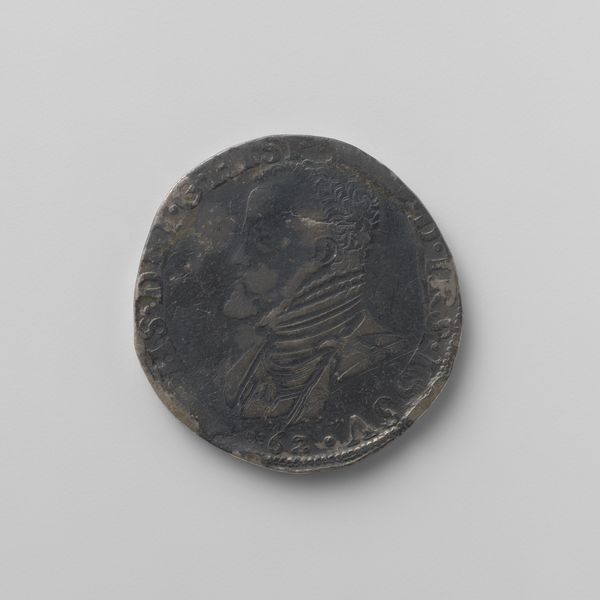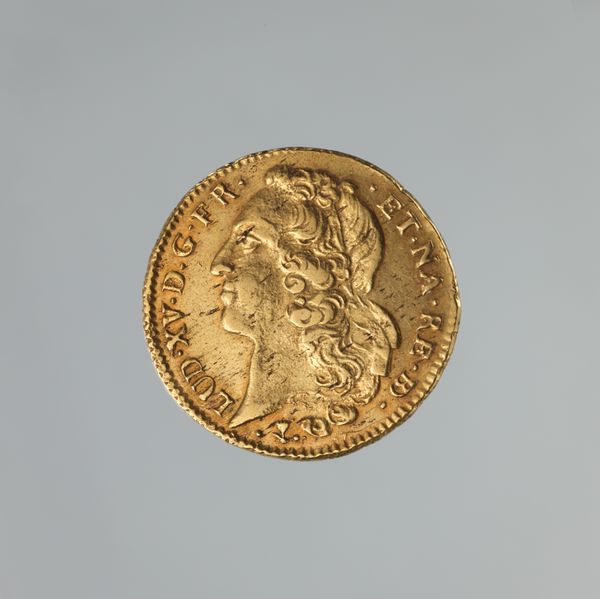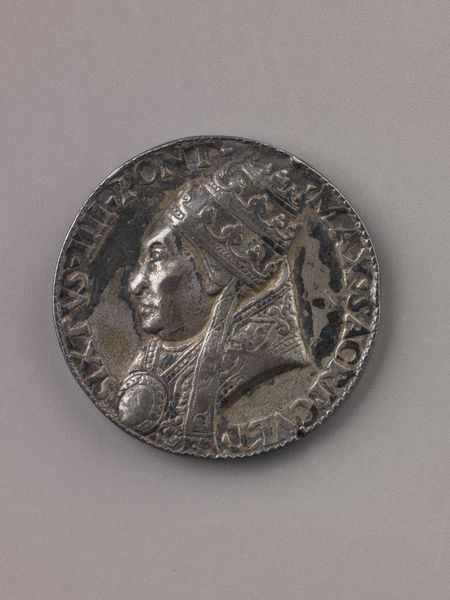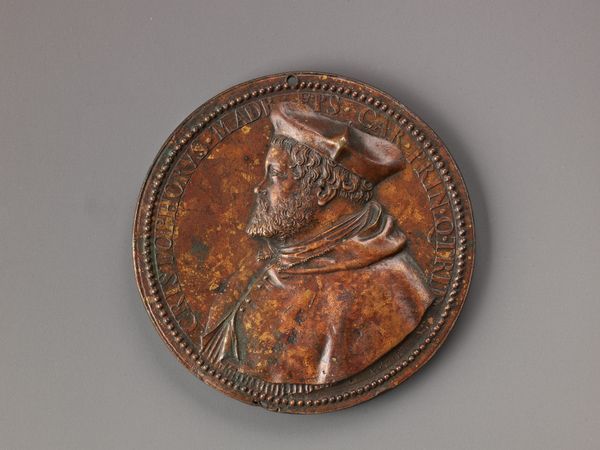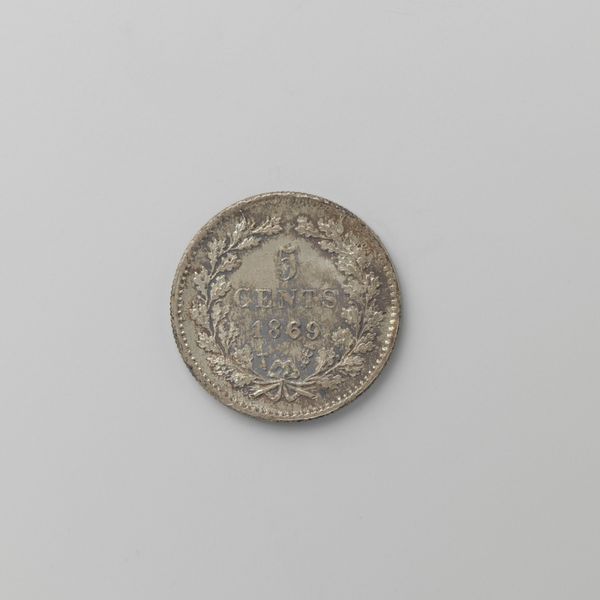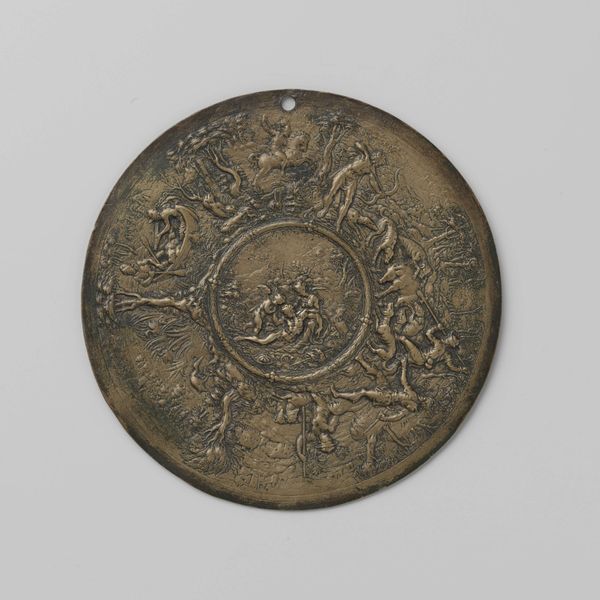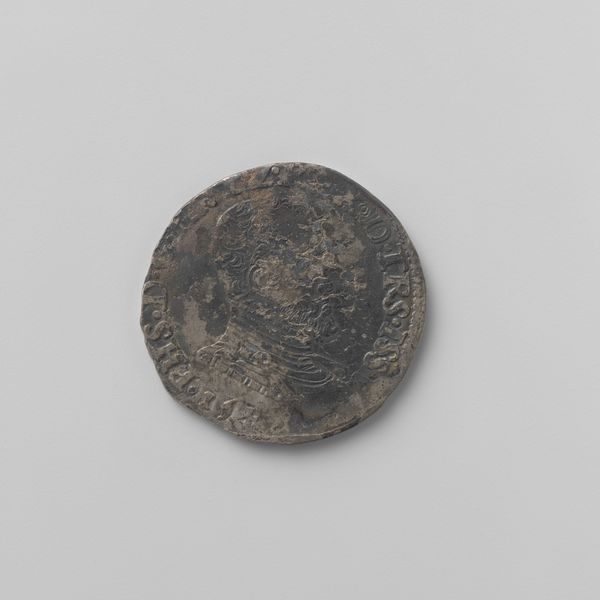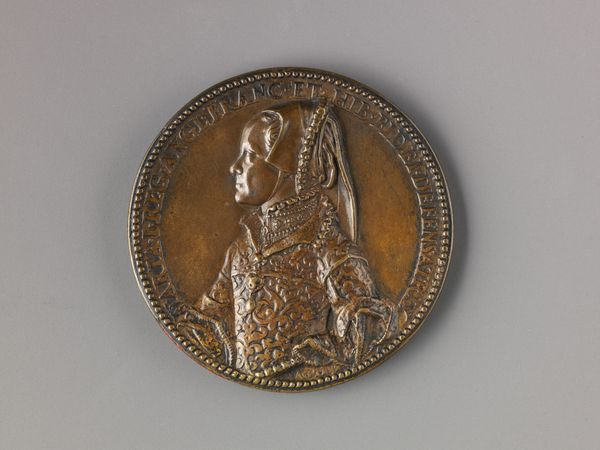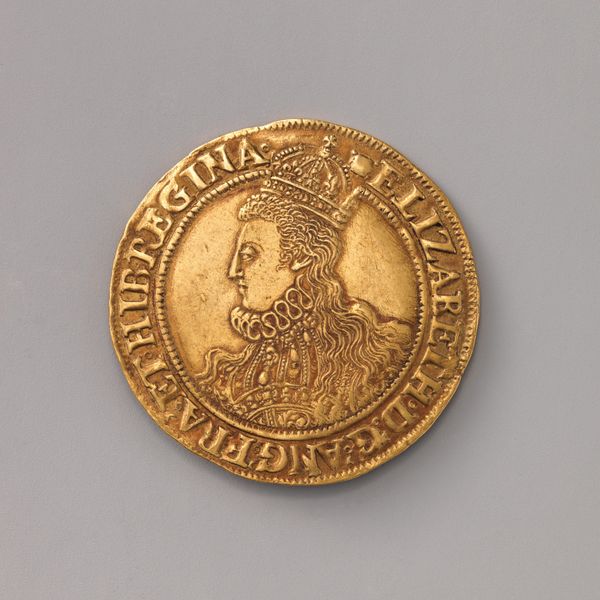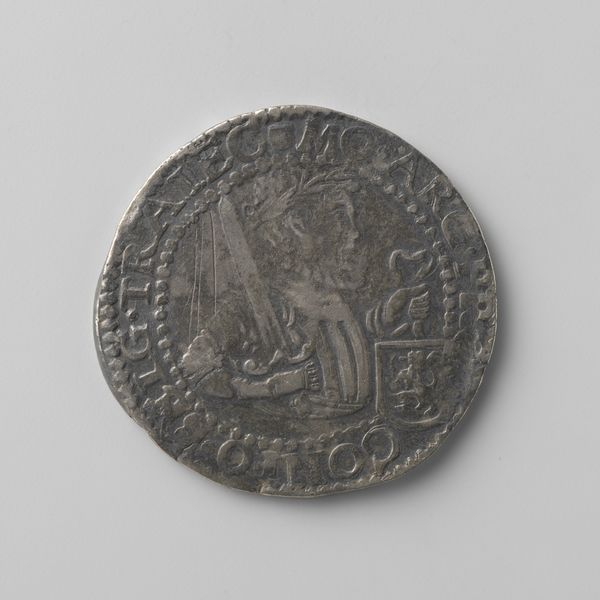
Cosimo I de'Medici (1519–1574), Duke of Florence, 1537; Grand Duke of Tuscany, 1569 1561
0:00
0:00
metal, sculpture
#
portrait
#
medal
#
metal
#
sculpture
#
11_renaissance
#
sculpture
#
decorative-art
#
italian-renaissance
#
profile
Dimensions: Diameter: 1 1/2 in. (38 mm)
Copyright: Public Domain
Editor: Here we have Domenico Poggini’s bronze medal of Cosimo I de'Medici, made in 1561. The first thing I notice is the texture – it's aged yet remarkably detailed for a small object. What stands out to you? Curator: Initially, it’s the very concept of portraiture itself that commands my attention, particularly in this relief format. Consider how Poggini manipulates the constraints of a circular plane to project not only Cosimo’s likeness, but also his authority. Note how the incised lettering acts almost as a frame. How do you feel that contributes? Editor: It's interesting. It's almost like the inscription grounds the portrait and gives the portrait clarity and context, anchoring his image. What does the material, bronze, tell us about Poggini’s intentions? Curator: The selection of bronze transcends mere utility; its inherent qualities augment the medal’s communicative potential. Bronze, with its capacity to capture fine detail, allows for a nuanced depiction of Cosimo’s features and attire, and, crucially, signifies permanence. Editor: So, it's about conveying enduring power. That’s so interesting! Thanks for pointing that out! Curator: Precisely. By emphasizing the formal elements – the texture, the inscription, and the materiality of the bronze – we begin to see how the object transcends its immediate function. It becomes a powerful statement about legacy. Editor: This really shifted my understanding; seeing it as a symbol of power constructed through form and material makes a big difference! Curator: Indeed. By appreciating how visual language is purposefully designed, we gain so much understanding of Renaissance artwork and its meaning.
Comments
No comments
Be the first to comment and join the conversation on the ultimate creative platform.
